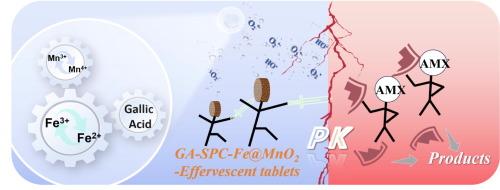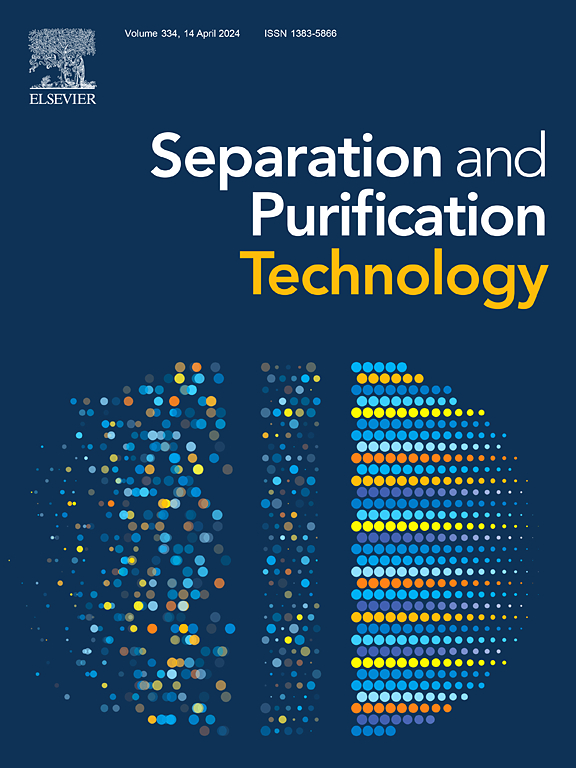Novel sodium percarbonate/gallic acid/Fe doped MnO2 catalyst effervescent tablets for efficient degradation of amoxicillin
IF 8.1
1区 工程技术
Q1 ENGINEERING, CHEMICAL
引用次数: 0
Abstract
In this work, Fe-loaded MnO2 (Fe@MnO2) nanomaterials were co-pressed with gallic acid (GA) and sodium percarbonate (SPC) to form a composite effervescent tablet (G-S-MOFO-ET) for the efficient degradation of antibiotics. The modulation of GA accelerated the Fe/Mn cycling on the catalyst surface while making the effervescent tablet system excellent in degradation, cyclic stability and resistance to environmental interference. About 95 % amoxicillin (AMX) could be degraded within 3 min (kobs = 0.0157 min−1). Density functional theory (DFT) calculations indicated that the introduction of Fe sites realized the transfer of the catalyst active sites from Mn to Fe, resulting in the formation of a degradation system dominated by ·O2•− and assisted by HO• and 1O2. In addition, the micron bubbles generated by the self-aeration of the effervescent tablet significantly enhanced the mass transfer efficiency of the system, which is equivalent to magnetic stirring at 50 r/min and has a promising future in engineering applications.

用于高效降解阿莫西林的新型过碳酸钠/金属酸/掺杂铁的 MnO2 催化剂泡腾片
在这项研究中,Fe负载的MnO2(Fe@MnO2)纳米材料与没食子酸(GA)和过碳酸钠(SPC)共同压制成复合泡腾片(G-S-MOFO-ET),用于高效降解抗生素。GA 的调制加速了催化剂表面的铁/锰循环,同时使泡腾片系统具有优异的降解性、循环稳定性和抗环境干扰能力。约 95% 的阿莫西林(AMX)可在 3 分钟内降解(kobs = 0.0157 min-1)。密度泛函理论(DFT)计算表明,Fe位点的引入实现了催化剂活性位点从Mn向Fe的转移,从而形成了以-O2-为主、HO-和1O2为辅的降解体系。此外,泡腾片自曝气产生的微米级气泡显著提高了系统的传质效率,相当于 50 r/min 的磁力搅拌,在工程应用中大有可为。
本文章由计算机程序翻译,如有差异,请以英文原文为准。
求助全文
约1分钟内获得全文
求助全文
来源期刊

Separation and Purification Technology
工程技术-工程:化工
CiteScore
14.00
自引率
12.80%
发文量
2347
审稿时长
43 days
期刊介绍:
Separation and Purification Technology is a premier journal committed to sharing innovative methods for separation and purification in chemical and environmental engineering, encompassing both homogeneous solutions and heterogeneous mixtures. Our scope includes the separation and/or purification of liquids, vapors, and gases, as well as carbon capture and separation techniques. However, it's important to note that methods solely intended for analytical purposes are not within the scope of the journal. Additionally, disciplines such as soil science, polymer science, and metallurgy fall outside the purview of Separation and Purification Technology. Join us in advancing the field of separation and purification methods for sustainable solutions in chemical and environmental engineering.
 求助内容:
求助内容: 应助结果提醒方式:
应助结果提醒方式:


